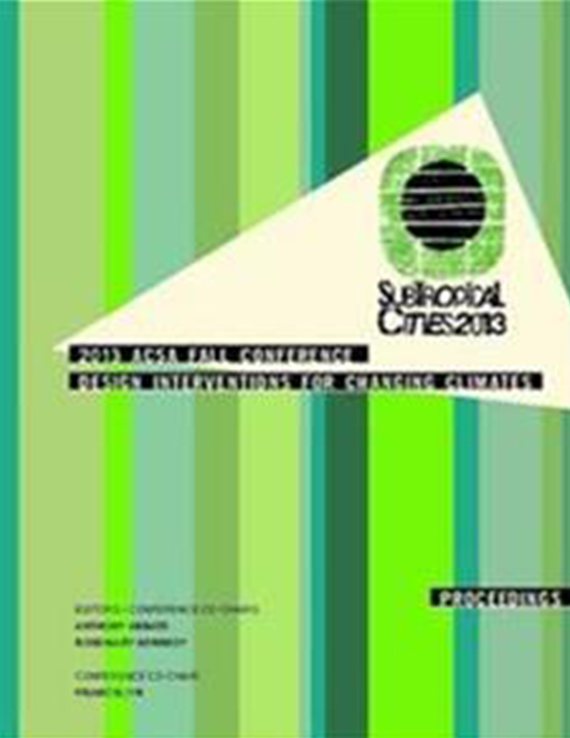Author(s): John Sandell
Permanent inundation of low-lying communities due to climate related changes cause, among other factors, the abandonment of territory, the decay, removal or adaption of existing structures, and the eventual redesign and building of future communities. As nature transforms low-lying territories, current urban models could become obsolete, and there will be a need to implement new urban morphologies tailored to site-specific situations and responsive to the complexity of environmental, human and technological factors.This research speculates on how the physical nature of low-lying, subtropical coastal communities can adapt to climate related changes, and in particular, sea level rise, storm-surge, and temperature increases. The underlying narrative considers a partial retreat from existing human habitat due to permanent inundation, a transforming local economy, and a slow rebuilding of territories into “climate smart” urban morphologies. The design of “climate-smart” urban morphologies aims to integrate human and natural systems in a socially and culturally responsive design. The urban environment is conceived as a manifold for the flow of humans and goods, density, and the agglomeration of economies. The growth pattern provides for fluctuations, and the migration and proliferation of the natural environment in relation to long-term climate related changes. Rather than distinct boundaries between urban space and building, the project proposes a strategy of interconnectivity among site, urban design and building by utilizing clustering, gradient massing, fluidity and a sharing of patterns at multiple scales.The interplay between the architectural and the urban addresses common criteria including, (among others), integration with natural ecosystems and hydro-patterns, land and water conservation, shoreline stabilization, sustainable urban density, public space and pedestrian walkability, rainwater harvesting, energy self-sufficiency, urban ventilation, and multimodal transportation.The design research method appraises hierarchical relationships among diverse inputs and their feedbacks. Aims and objectives are outlined within sample frames made up of characteristics that are identified from natural, human, and technological criteria. By shifting emphasis among diverse characteristics, a range of project models are studied, their responsive qualities compared, and new projects are proposed as case studies to be further critiqued and tested by environmental scientists, social scientists, economists, transportation engineers, urban planners and policy makers. With a focus on building and climate, the project constructs potential strategies for the future transformation of urban models and policy. Outcomes from site-specific proposals contribute to the understanding of viable urban alternatives among similar geographic conditions. Topographical, bathymetric maps interactive with morphological models identify transformative situations due to natural forces and become some of the key apparatuses for building strategic design hierarchies and innovative trajectories for the future development of sub-tropical communities. The project also advances an interdisciplinary approach towards the notion of a “managed retreat” of human habitat, a coordinated adaption strategy with the social and environmental sciences, planning and engineering where the built environment becomes more practically oriented to the regeneration of coastal ecosystems and the needs of humans.
Volume Editors
Anthony Abbate, Francis Lyn & Rosemary Kennedy
ISBN
978-0-935502-90-9

 Study Architecture
Study Architecture  ProPEL
ProPEL 
